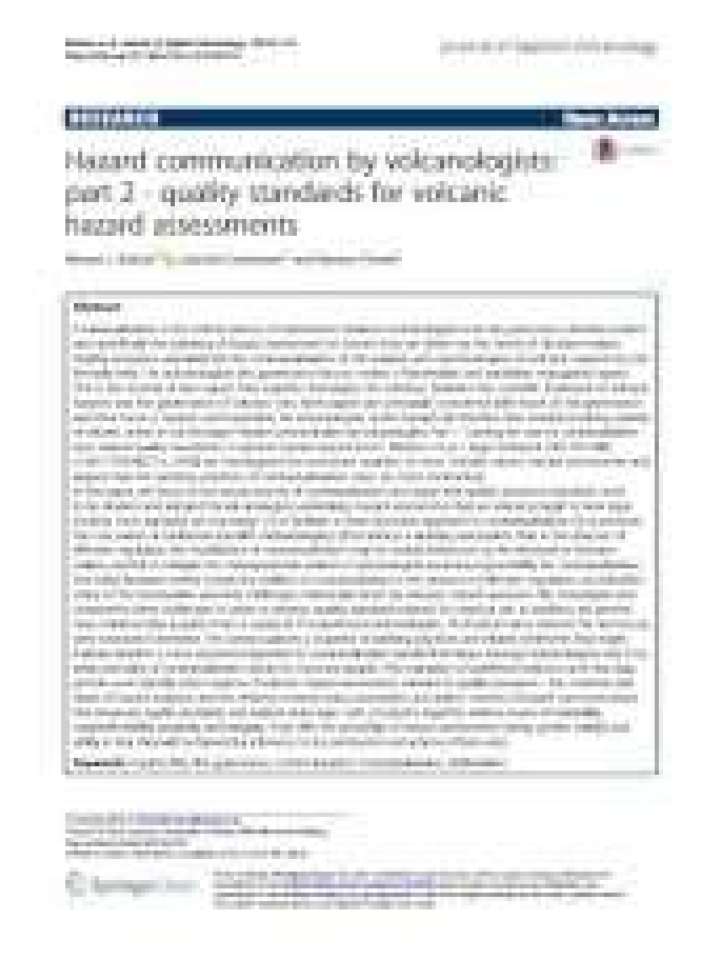Hazard communication by volcanologists: Part 2 - Quality standards for volcanic hazard assessment
Contextualisation is the critical process of interactions between volcanologists and risk governance decision-makers and specifically the tailoring of hazard assessments to ensure they are driven by the needs of decision-makers. Quality assurance standards for the contextualisation of the analysis and communication of volcanic hazards do not formally exist. For volcanologists this governance lacuna creates a foreseeable and avoidable managerial hazard.
This is the second of two papers that together investigate the interface between the scientific treatment of volcanic hazards and the governance of volcanic risks. Both papers are principally concerned with issues of risk governance and their focus is hazard communication by volcanologists at this hazard-risk interface (the interface) during periods of volcanic unrest.
The focus of this paper is the actual process of contextualisation and argue that quality assurance standards need to be devised and adopted by volcanologists undertaking hazard assessments that are robust enough to bear legal scrutiny. Such standards are necessary: (1) to facilitate a more structured approach to contextualisation; (2) to preserve the core values of traditional scientific methodologies; (3) to address a working assumption that, in the absence of effective regulation, the ‘equilibrium of contextualisation’ may be unduly influenced by the demands of decision-makers; and (4) to mitigate the managerial risks related to volcanologists assuming responsibility for contextualisation.
The initial literature review reveals the realities of contextualisation in the absence of effective regulation and identifies many of the foreseeable practical challenges historically faced by volcanic hazard assessors. The paper investigates and characterises these challenges in order to develop quality standards tailored for practical use. In addition, it presents new empirical data acquired from a survey of 33 experienced volcanologists, 18 of whom were selected for one-to-one semi-structured interviews. The survey captures a snapshot of working practices and related sentiments that might indicate whether a more structured approach to contextualisation would find favour amongst volcanologists and, if so, what principles of contextualisation would be most acceptable. This evaluation of published evidence and new data permits the identification of seven aspects of volcanic hazard assessments relevant to quality assurance - the methods and status of hazard analyses, and the delivery, content, status, perception and advice content of hazard communications.
Explore further
